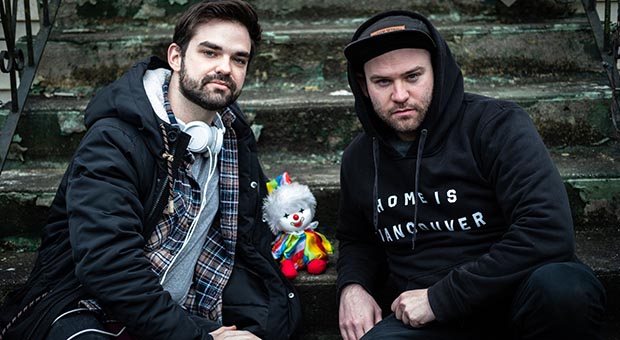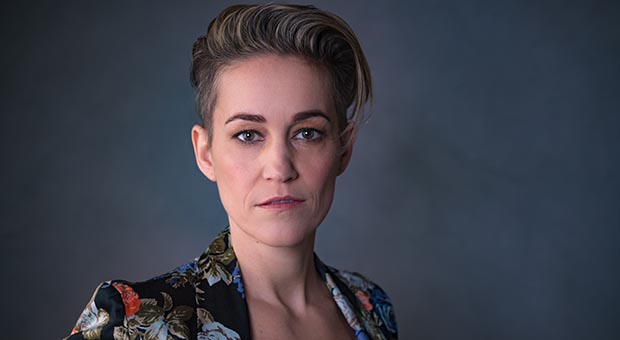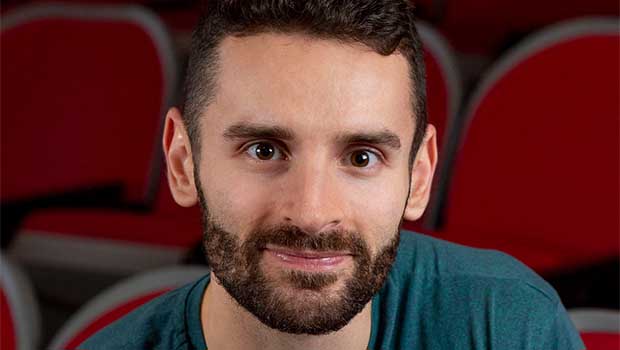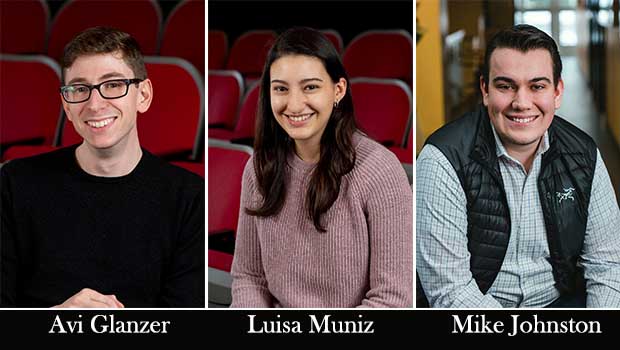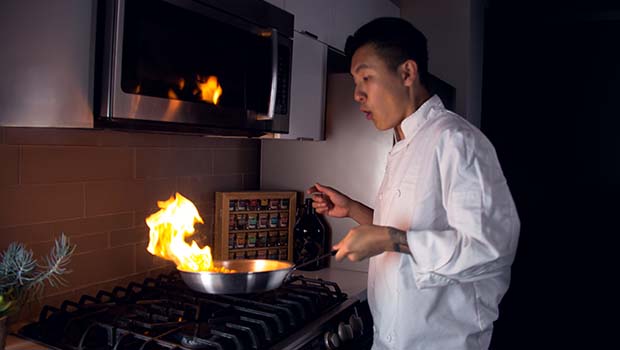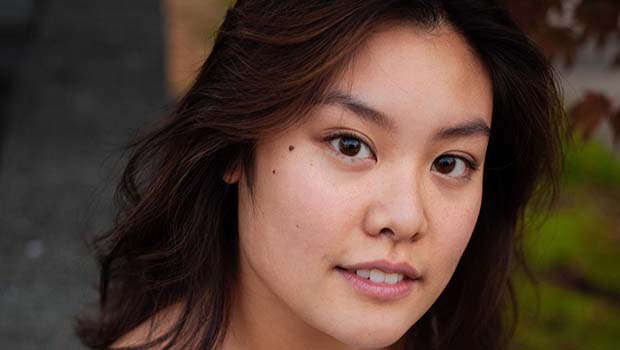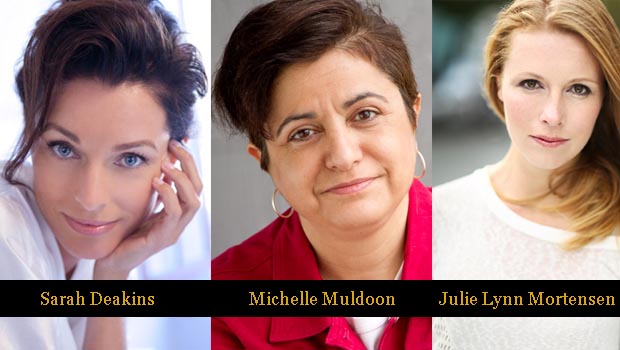
26 Jul The Biz Interview: Last Stand to Nowhere Feature
Last Stand to Nowhere does something no Spaghetti Western has ever done; put women at the forefront of an iconic gunfight, the Gunfight at the OK Corral…
This is the pitch for Last Stand to Nowhere, a new short film from the mind of Vancouver-based writer and director, Michelle Muldoon.
As the talented cast and crew – which includes Victoria Angell (Producer), Frances Flanagan (Producer), Maja Aro (Stunt Coordinator and Producer), Lindsay George (Director of Photography), Chelah Horsdal, Johannah Newmarch, Sarah Deakins, Julie Lynn Mortensen, and Jenn MacLean-Angus – prepare to embark on building this Western cinematic adventure, they are currently in the midst of a crowdfunding campaign to bring it to the screen.
We spoke to Michelle Muldoon, Julie Lynn Mortensen, and Sarah Deakins to learn about all things Last Stand to Nowhere.
________________________________
Can you start by telling us a little bit about you and your involvement with Last Stand to Nowhere?
Michelle Muldoon: I’m the writer/director of Last Stand to Nowhere. I’m a writer who turned to filmmaking to learn about the process of making film and I never turned back. I thought of this idea a few years ago when I was on the set of Jamestown in Langley. It’s the western town that hosts productions like When Calls the Heart.
A female western is right in line with the kind of female characters I like to writer. Whether I’m writing genre, drama or dark comedy my female characters tend to be dynamic, damaged women who rise above their misfortunes to carve their own destiny out of the rubble of their lives.
I love the idea that the Gunfight at the OK Corral is a modern myth born of history. It’s not the facts that matter anymore but the message of the story. In the case of Last Stand to Nowhere, we’re inserting a powerful female presence on a genre that has all but excluded women unless they’re the long suffering homesteader wife or the fallen whore in the saloon.
Julie Lynn Mortensen: I’m a Vancouver-based actress, very excited to be playing Billie Clanton in Last Stand to Nowhere. Billie is young, brash, brave and trigger-happy. The conflict in the story between the Earps and the Clantons is incited by the supposed ownership of my horse. And I’m ready to fight for it.
Sarah Deakins: Michelle and I have been friends for several years and she’d been talking about this idea for awhile. I always knew I wanted to be involved and I was lucky enough that she saw a place for me among the cast!
What should audiences expect from Last Stand to Nowhere?
Michelle Muldoon: Last Stand to Nowhere is a Western that re-imagines the Earps, Clantons and McLaury brothers as sisters instead. It’s a timeless story that has been retold in film and television multiple times and in multiple ways. Even the original Star Trek took their shot at the story.
Our way is to turn the genre and the myth upside down and to give women the one role that they never get in Westerns; the ambitious gunslinger who deals with resistance to her plans the only way she knows how… with a gun. It’s a story of power, greed, and confidence; characters women don’t often get to play.
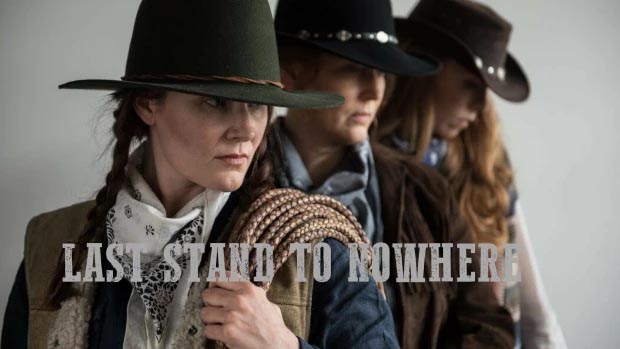
Why do you think the Western genre has endured?
Michelle Muldoon: Westerns have experienced a great number of changes over the years. The first great wave was the Hollywood Western then we had the Italian (Spaghetti) Western and then came the Revisionist Western. There are other sub-genres beyond these three major ones because the idea of the fall and rise of the self-determined is a powerful story that transcends boundaries.
It survives because Westerns are myths built around questions of morality. There’s a code of honour, albeit sometimes twisted, that sits at the root of every story. The movie always centres on a self-made man, lawman, gunslinger or rustler. Their journey forces them to question who they are and what they stand for. In many ways, it’s the ultimate story about self-actualization.
Julie Lynn Mortensen: I remember watching Clint Eastwood Westerns with my dad as a young girl. I would see them on TV and say “Dad this is boring,” and 2 hours later find myself still glued to the screen with him watching the credits scroll. Even though Westerns seemed like boy stories to me, I remember getting drawn in by the stakes. The characters were so raw, so exposed on their horseback. One gunshot and they would be done for, but they still had the bravery to fight for what they believed in. I think it endures because we love watching that raw, rugged bravery in action… it touches on something wild in all of us. Epic landscapes and beautiful horses are also a fabulous draw.
Sarah Deakins: I think there’s a romantic connection to the land in a Western that has perhaps fallen away in other genres. The scope of the landscapes in these stories is so vast, and in this case it reflects the epic mythology of the story. The setting of a Western already dictates an epic, vastness, which pumps up the stakes of a story automatically.
Which Western films have influenced you the most?
Michelle Muldoon: There’s a host of Western films I love; the first Magnificent Seven, The Good the Bad and The Ugly, Two Mules for Sister Sara, the list could go on. The Italians brought moral ambiguity to the Western and it helped to spur on a revival in the Western during the 1960’s and 1970’s. I love the idea that when there are no rules, justice does not necessarily thrive. But then I watch the original Magnificent Seven and I love the certainty that the gunslingers have about what is right or wrong. I think what many of these movies have in common is the belief that when someone reaches that point of no return, they will often do the right thing even if it’s for the wrong reason.
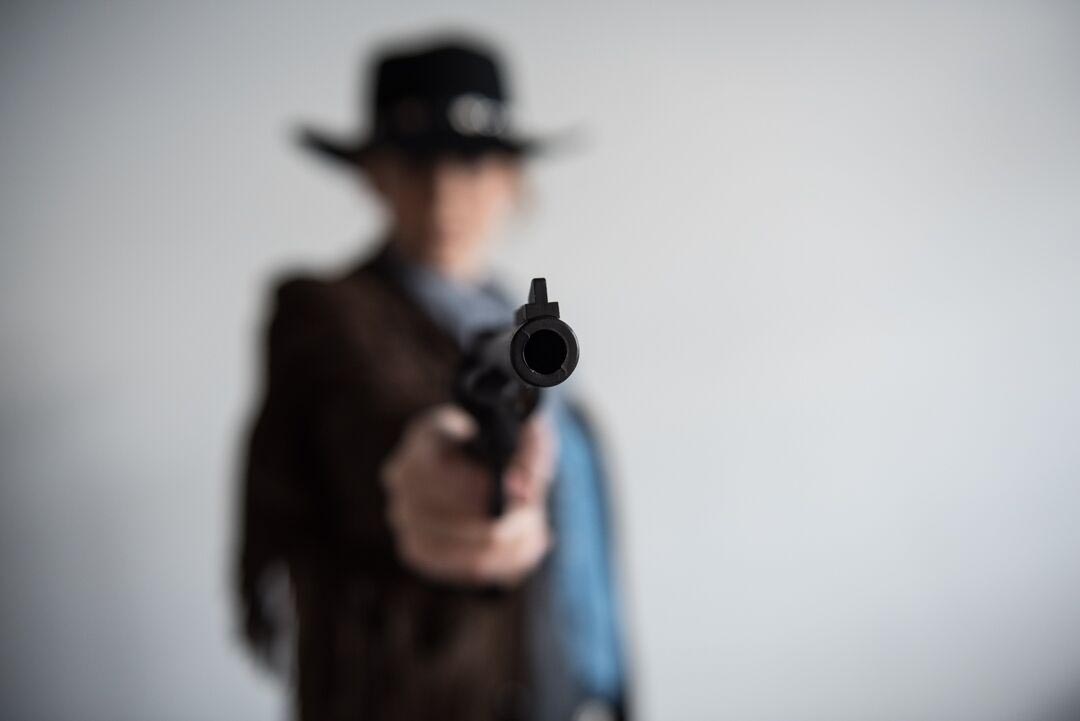
What are the three most important elements for a successful Western film?
Michelle Muldoon: The Western needs a great story built around a protagonist who is either a disenfranchised drifter, a person of principle or a self-made man. There’s an epic conflict that involves life or death decisions and it takes place in a world where self-reliance equals survival. The West is about people that take matters into their own hands because there’s no one else to do it. I think that’s part of the appeal of the genre. It’s the precursor to the vigilante movies that have become popular in action films.
Sarah Deakins: Number one has to be the characters. We have to love them or love to hate them, and see their internal struggle. That’s true for me of all genres.
Number two would be the mythology. There’s something about the history of two families on opposite sides, or two groups on apposing sides of the law. The feelings of resentment and the need for revenge go back decades in these stories, and the ability to hold a grudge seems to be much stronger in these types of tales…
Number three is a strong plot with a great climactic ending. Endings are very important in Westerns; they must give the impression of the mythology continuing after the film’s credits have run their course, and leave us satisfied at the same time. It’s not an easy task.
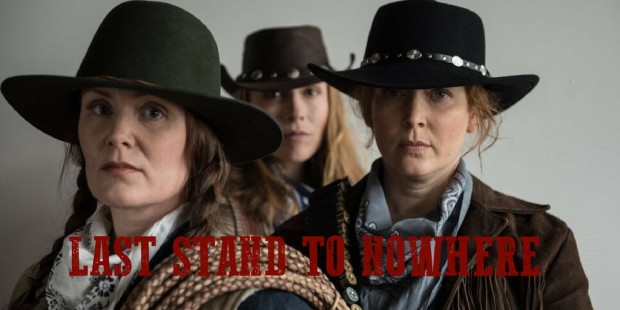
What books and authors have been influential to your career so far?
Michelle Muldoon: As a child I devoured the Dune series and the Narnia Chronicles. I fell in love with the details of the worlds created in these books. It was world building at its finest and I adored that I could disappear into those worlds so easily because the words on the page were so effortless.
As a writer I adore the practicality of The Coffee Break Screenwriter by Pilar Alessandra and Your Screenplay Sucks by William M Akers. Both books give you the tools to start writing and to put your screenplay on the page. I tend to be a linear thinker and these books play well into the way my mind works.
Julie Lynn Mortensen: In my career I feel I have been most influenced by the great actors I have seen on the stage & screen that have masterfully brought the words of great writers to life. I’m an avid reader and love to dive into novels and plays, but the craft of acting feels more like a living literature to me, a capacity to take great writing and transmit it through body, voice and spirit to create an authentic and touching human being. So when I think of influential authors I tend to think through the lens of amazing productions I’ve been blessed to see.
I think of Shakespeare plays and how much I learned watching Vanessa Redgrave perform in one in London recently. I think of seeing Mark Rylance in Jez Butterworth’s play Jerusalem in New York and the way he embodied a character like nothing I have ever seen. I think of loads of local productions from writers like Tony Kushner and Martin McDonagh that have completely blown me away. I especially think of the many great Canadian playwrights like Judith Thompson, Sharon Pollock, Daniel MacIvor and so many more whose work I have been blessed to see or bring to life myself. I especially think of my dear friends who are writers and have written remarkable play-scripts and screenplays and have blown my mind with their creativity and capacity to conjure story.
________________________________
“Film is a long game, and if you aren’t willing to play it, you won’t last long.”
________________________________
What’s the most important lesson that you have learned in your career?
Michelle Muldoon: If I’ve learned anything in my years in film it’s first of all, be stubborn. Don’t listen to what other people say you can’t do. Focus on what you want to achieve and don’t lose sight of it. Film is a long game, and if you aren’t willing to play it, you won’t last long.
Secondly, if you’re clear with who you are and what you stand for, you’ll be clear with everyone you encounter. No one likes to work with someone who can’t communicate or make a decision and take responsibility for the results. No one expects you to be perfect, they do expect you to be responsible, and wishy washy won’t get you far in this business.
Julie Lynn Mortensen: Oh there have been so many! I’m so grateful for how much acting has taught me about humanity and myself. I think the most important one is… well, it’s going to sound completely cheesy, but self-love. As an actor you are always putting yourself out there in an extremely vulnerable way. Because the work is a transmission through your very being, it’s not like you can separate yourself from that very easily. I can look at something I have painted or written and judge it quite neutrally, without feeling like I am judging myself. That is harder with acting, and it’s much more difficult not to take other people’s opinions personally too.
The process of auditioning can feel like dodging bullets, trying not to get wounded by the roles that don’t go your way. So what I am learning, slowly but surely, is that in all this rawness, this extreme vulnerability, I have to be brave too. But unlike Billie, my strength is not in a sidearm, but in being my own source of self-love. Acting teaches me every day to love myself as deeply and unconditionally as I possibly can. That’s what keeps me brave enough to get back on the horse and keep riding. And for the record, it also makes the journey a really beautiful one, no matter what the day brings, and I wouldn’t trade that for anything.
Sarah Deakins: When it comes to the” labor of love projects”, work with people you love on projects you love. Don’t waste time on indie projects that are designed just to “sell”. If you are doing something for free or on the cheap, it better be something you are passionate about, otherwise you run the risk of becoming jaded and resentful. It’s a hard road, this particular vocation, so you at least need to be inspired by the material and the people making it, whenever possible.
Where can we find out more about you and the Last Stand to Nowhere campaign?
Michelle Muldoon: Last Stand to Nowhere can be found at the following links:
Indiegogo, Facebook, Twitter, and Instagram.
We’ve made our Indiegogo goal, but for us that was just a starting point to avoid paying the website’s fees. Now that we’re past that, we’re hunkering down for our stretch goals and the money we need to make this film. I hope people will join the wagon train and help us settle into production.
________________________________
Thanks to Michelle Muldoon, Julie Lynn Mortensen, and Sarah Deakins for speaking with us!
Check out the Indiegogo campaign to get involved with Last Stand to Nowhere and keep up with all the developments.
Last Stand to Nowhere photos by Wendy D Photography.

